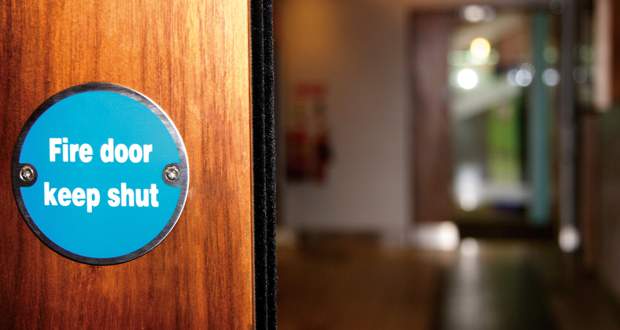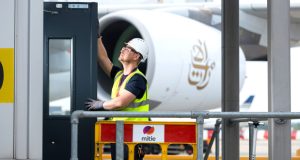 Anthony Robins, Technical Director at FireSealsDirect explains how changes in fire door legislation will affect FMs and their duties.
Anthony Robins, Technical Director at FireSealsDirect explains how changes in fire door legislation will affect FMs and their duties.
Five years after the terrible Grenfell Tower tragedy some of the initial inquiry findings have impacted fire door legislation and, by extension, facilities managers’ duties around the fire safety of the buildings.
Below, we outline the changes in legislation, the reasons for the recommendations and how facilities managers can ensure their fire doors will perform as expected in the event of a fire.
Changes in legislation
From 23 January 2023, all responsible persons for multi-occupied residential buildings in England with storeys over 11 metres will need to:
- Undertake quarterly checks on all fire doors in the common parts
- Undertake annual checks on all flat entrance doors that lead onto a building’s common parts
Responsible persons of multi-occupied residential buildings with two or more sets of domestic premises will also need to provide all residents with information on the importance of fire doors and the role they play in keeping the building safe.
Why has this come about?
The recent Grenfell Tower Inquiry Phase 1 Report noted that fire doors play an essential role in preventing or inhibiting the spread of smoke and toxic gases and also preserving the effective compartmentation of buildings.
It found that the fire doors in Grenfell Tower didn’t act in the way they should have to prevent smoke and gas spreading due to them being damaged or in disrepair.
As a result, it will be a legal requirement from January 2023 that all fire doors are checked on a quarterly or annual basis depending on their location. It is hoped that in doing so, fire doors won’t be left to fall into disrepair and will be maintained correctly.
All facilities managers should carry out checks of their fire doors as soon as possible to make sure they are in good working condition and adhere to current legislation.
What is the current fire door legislation?
When you need a fire door
Domestic Buildings
- In domestic dwellings above two levels, every door leading to a stairwell must be a fire door where it leads to a habitable room.
- In loft conversions.
- Between a house and integral garage.
- Between business and residential spaces in a mixed use building.
Non-Domestic Buildings
- Fire door guidance for non-domestic buildings are determined on each building and its escape routes. The building plans should outline where the fire compartments are and therefore where fire doors are needed. If you’re unsure, you can get a third party accredited fire risk assessor to look at your requirements.
Checks to carry out:
Below, we’ve listed the necessary checks to carry out on fire doors to ensure they’re in line with current legislation:
Certification
The fire door itself should have a label, plug or similar marking on the door showing it’s a certified fire door.
All ironmongery such as locks, latches, door closers and hinges must also be CE or UKCA marked and be compatible with the door leaf’s certification.
You can check this by consulting the test evidence and data sheets, or get in touch with the manufacturer.
Apertures
Any apertures in the form of windows or air transfer grilles must be compatible with the door leaf and should also be fire stopped through the use of an intumescent glazing system or intumescent air transfer grilles.
Gaps & Seals
There should be a gap of no more than 3-4mm around the door and the door frame.
Intumescent strips should be fitted at the top and sides of the door. Whether this is fire only intumescent strip or fire and smoke intumescent strip depends on whether the door is a fire door or a fire and smoke door.
The gap at the bottom of the door should be no more than 8mm. If it’s a fire and smoke door, it should be no more than 3mm. If it’s larger than this, a drop down seal can be used to close the gap.
The hinges should be fixed firmly with no screws missing.
Closers
Door closers should be fully functioning and close onto the latch from any position with ease.
Operation
The whole door assembly should close correctly and easily around all four sides.
It should be possible for the responsible person assigned to carry out the inspection of a fire door. Should you notice any issues when inspecting your fire doors in line with the above checks, you may need to involve a specialist to assist you in rectifying the problems.
Conclusion
The role of fire doors in the fire safety of residential buildings is becoming increasingly spotlight as findings from the Grenfell Tower Inquiry emerge. As a result, it is essential that fire doors are checked regularly to identify any issues that may mean they won’t function appropriately in the event of a fire.
As recommended by the Inquiry, facilities managers should carry out inspections of their
fire doors urgently to ensure they’re in line with current legislation and ensure they’re aware of the new legal requirements from January 2023 and put measures in place to adhere to these to avoid any penalties.





